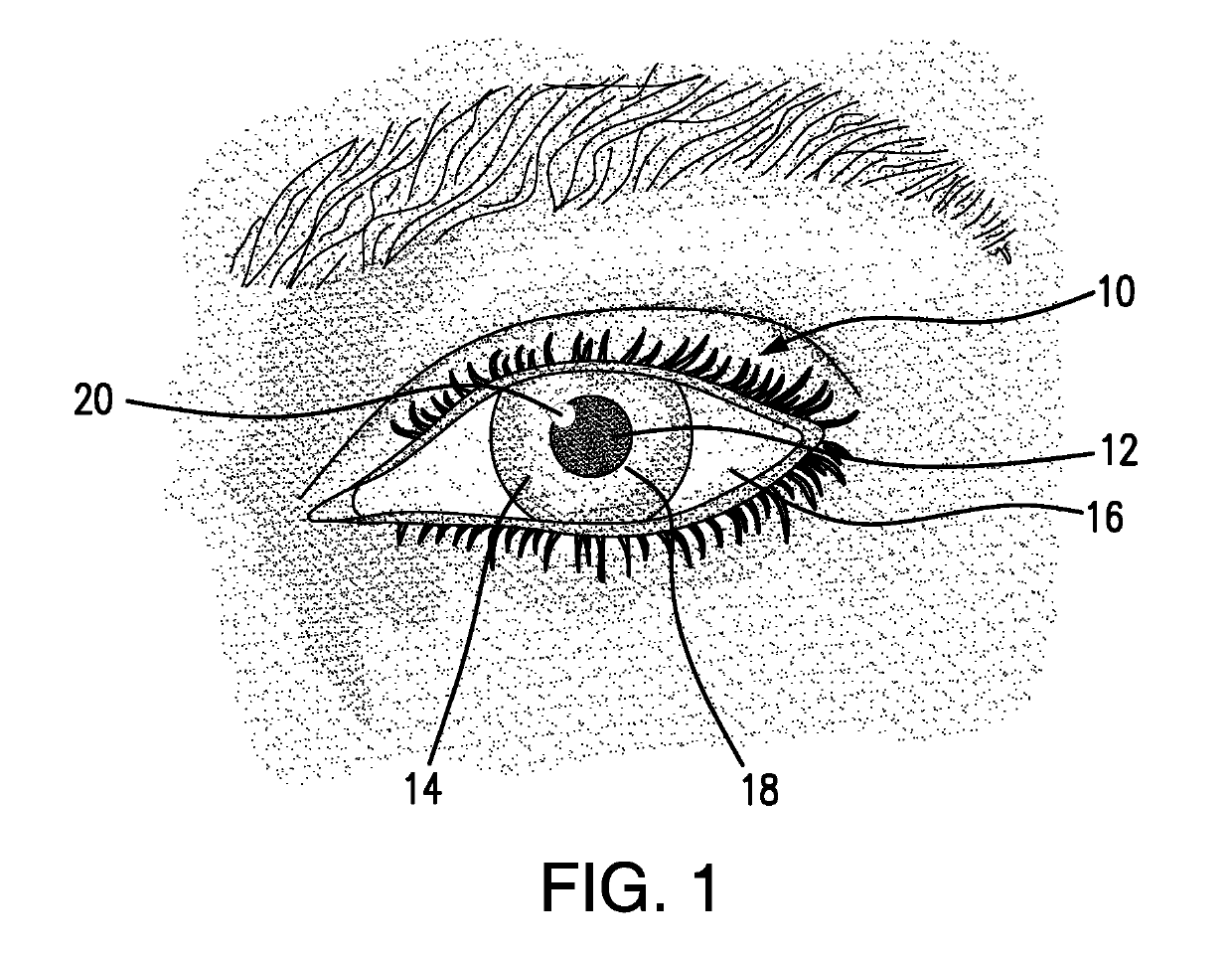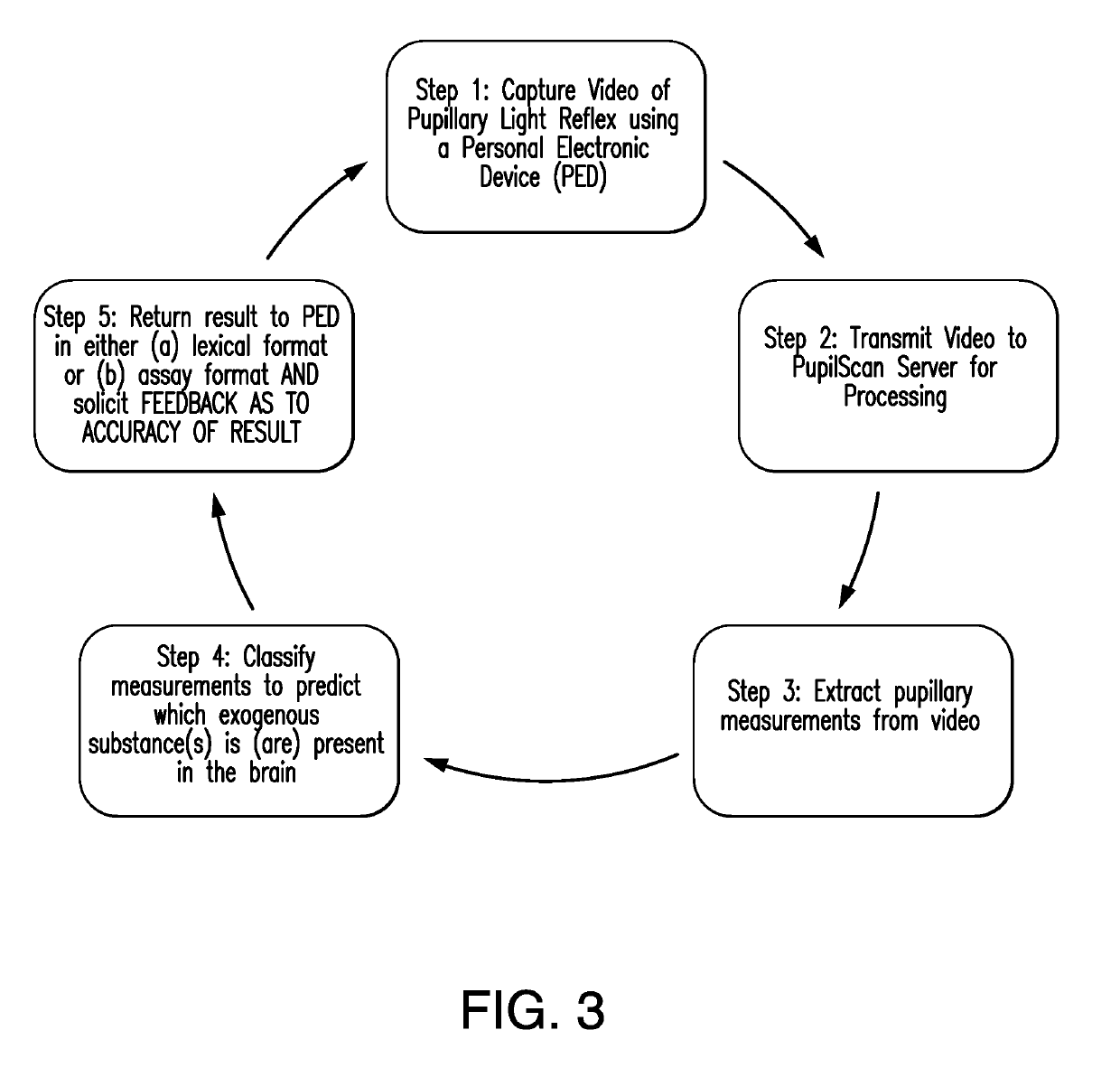Systems and Methods for Capturing and Analyzing Pupil Images to Determine Toxicology and Neurophysiology
a system and image technology, applied in the field of system and method apparatus for capturing pupillary light reflex, can solve the problems of slow response time, commercial or consumer versions of pupilometers typically do not provide any interpretation of plr, and tests have difficulty in detecting purely synthetic toxins, so as to improve the accuracy of diagnostic outputs.
- Summary
- Abstract
- Description
- Claims
- Application Information
AI Technical Summary
Benefits of technology
Problems solved by technology
Method used
Image
Examples
example
[0231]FIG. 8 is a graph depicting an actual PLR (Loewenfeld, Irene E, (1999), The Pupil, Boston, Mass., Butterworth Heineman, page 777) showing the concentration of Benzedrine (brand name under which amphetamine was marketed in the U.S. by Smith, Kline & French, now part of GlaxoSmithKline, London, UK) administered, which at 10 mg is low and has almost no sympathomimetic effect but does have a marked central effect on the pupils. The PLR after administration of the drug (broken lines) is shifted upwards and the reactions are enhanced as the increased pupil size creates a larger mechanical range for contraction. Also, the oscillations, or fatigue waves, are abolished with the amphetamine induced central stimulation. If a similar sympathomimetic drug topically were administered to the eye, with no central effect on the brain, the pupil diameter would enlarge, but there would be no effect on the fatigue waves or pupillary oscillations.
PUM
 Login to View More
Login to View More Abstract
Description
Claims
Application Information
 Login to View More
Login to View More - R&D
- Intellectual Property
- Life Sciences
- Materials
- Tech Scout
- Unparalleled Data Quality
- Higher Quality Content
- 60% Fewer Hallucinations
Browse by: Latest US Patents, China's latest patents, Technical Efficacy Thesaurus, Application Domain, Technology Topic, Popular Technical Reports.
© 2025 PatSnap. All rights reserved.Legal|Privacy policy|Modern Slavery Act Transparency Statement|Sitemap|About US| Contact US: help@patsnap.com



